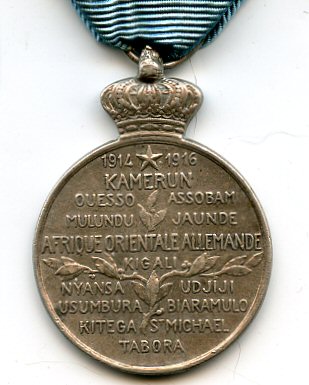
The South West Africa campaign was the conquest and occupation of German South West Africa by forces from the Union of South Africa acting on behalf of the British imperial government at the beginning of the First World War. The South African Prime Minister Louis Botha took the unusual move of directly leading his troops into battle as commander-in-chief, to the frustration of his cabinet.

General Sir Alexander Stanhope Cobbe was a senior British Indian Army officer and a recipient of the Victoria Cross, the highest award for gallantry in the face of the enemy that can be awarded to British and Commonwealth forces.

Wesley Merritt was an American major general who served in the cavalry of the United States Army during the American Civil War, American Indian Wars, and Spanish–American War. Following the latter war, he became the first American Military Governor of the Philippines.

The 23rd Infantry Brigade was an infantry brigade of the British Army that saw active service in the First World War, mainly on the Western Front During the Second World War, the brigade saw active service in the Syria-Lebanon Campaign, the Western Desert Campaign, and the Burma Campaign.

The 56th Infantry Brigade was an infantry brigade of the British Army that saw active service in both the First and the Second World Wars.

The East African campaign in World War I was a series of battles and guerrilla actions, which started in German East Africa (GEA) and spread to portions of Mozambique, Rhodesia, British East Africa, the Uganda, and the Belgian Congo. The campaign all but ended in German East Africa in November 1917 when the Germans entered Mozambique and continued the campaign living off Portuguese supplies.
The 13th Infantry Brigade was a regular infantry brigade of the British Army that saw active service during both the First and the Second World Wars.

The Royal Lincolnshire Regiment was a line infantry regiment of the British Army raised on 20 June 1685 as the Earl of Bath's Regiment for its first Colonel, John Granville, 1st Earl of Bath. In 1751, it was numbered like most other Army regiments and named the 10th Regiment of Foot. After the Childers Reforms of 1881, it became the Lincolnshire Regiment after the county where it had been recruiting since 1781.

The 2nd Infantry Brigade was a regional brigade of the British Army, active since before the First World War. It was the regional formation of the Army in the South East of England–the Brigade commanded and administered soldiers throughout Kent, Surrey and Sussex–but also Brunei. In December 2014 the Brigade merged with 145 (South) Brigade to form Headquarters 11th Infantry Brigade and Headquarters South East.
The 18th Infantry Brigade was an infantry brigade of the British Army that saw active service during the First and the Second World Wars.

The 3rd Infantry Brigade was a Regular Army infantry brigade of the British Army, part of the 1st Infantry Division. Originally formed in 1809, during the Peninsular War, the brigade had a long history, seeing action in the Second Anglo-Afghan War, and during both the First and the Second World Wars.

The 29th Infantry Brigade was an infantry brigade unit of the British Army. It was originally raised in 1914 and saw service during the First and Second World Wars and the Korean War.

Hermann Albin Josef Freiherr Kövess von Kövessháza was the final, and completely ceremonial, Commander-in-Chief of the Austro-Hungarian Army. He served as a generally competent and unremarkable commander in the Austro-Hungarian Army and was close to retirement in 1914 when the First World War broke out and he was given a command post.
The 234th Infantry Brigade was an infantry brigade of the British Army, raised during the First World War, and was later reformed during the Second World War.
Horace Arthur Rose was an administrator in the Indian Civil Service and also an author of works related to India in the time of the British Raj.

The Togoland campaign was a French and British invasion of the German colony of Togoland in West Africa, which began the West African campaign of the First World War. German colonial forces withdrew from the capital Lomé and the coastal province to fight delaying actions on the route north to Kamina, where the Kamina Funkstation linked the government in Berlin to Togoland, the Atlantic and South America.

The Commemorative Medal of the African Campaigns 1914–1917 was a Belgian military war service medal established by Royal Decree on 21 February 1917 to recognise combat service on the African continent between 1914 and 1918.

The Desert Column was a First World War British Empire army corps which operated in the Sinai and Palestine Campaign from 22 December 1916. The Column was commanded by Lieutenant General Philip W. Chetwode and formed part of Eastern Force. When Chetwode took command of Eastern Force after the Second Battle of Gaza, Harry Chauvel took command and oversaw the expansion of the column to three divisions.

The leaders of the Central Powers of World War I were the political or military figures who commanded or supported the Central Powers.

Brigadier general William Frederick Savery Edwards (1872–1941), commonly referred to as Brigadier-General W. F. S. Edwards, was a decorated British military officer who was appointed by the British Colonial Administration as the first Inspector General of the Uganda Protectorate Police, which later became the Uganda Police, and the simultaneous overall commander of the then British East Africa Police.
















